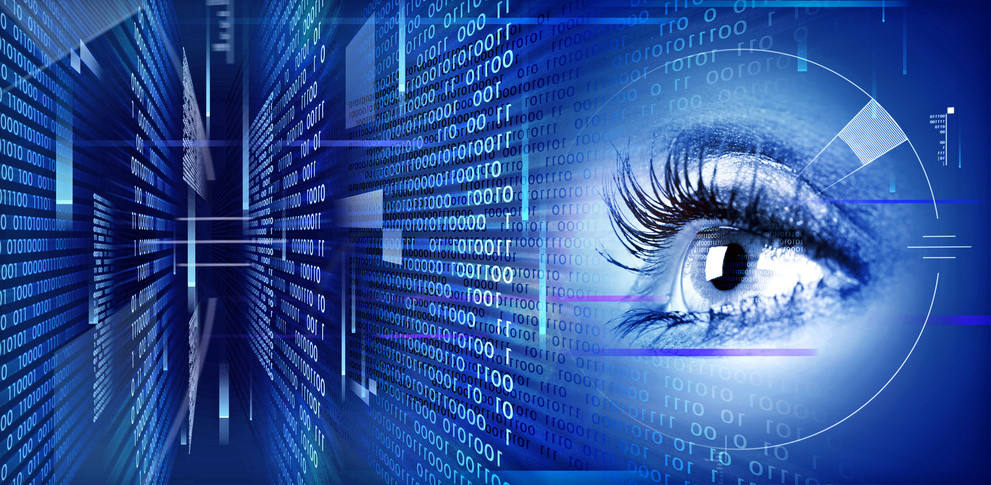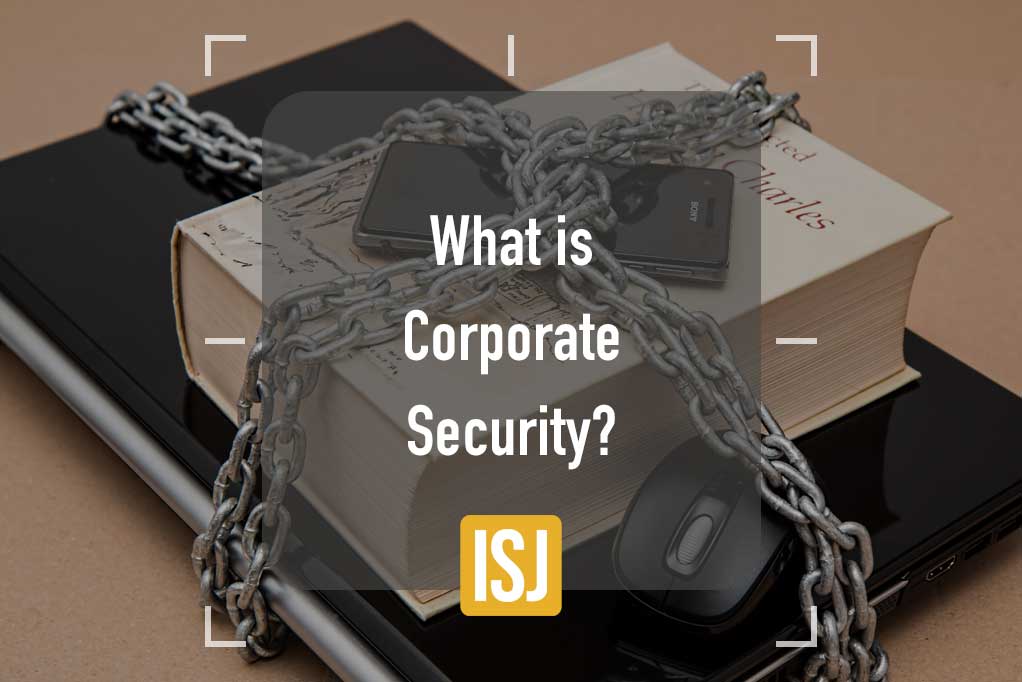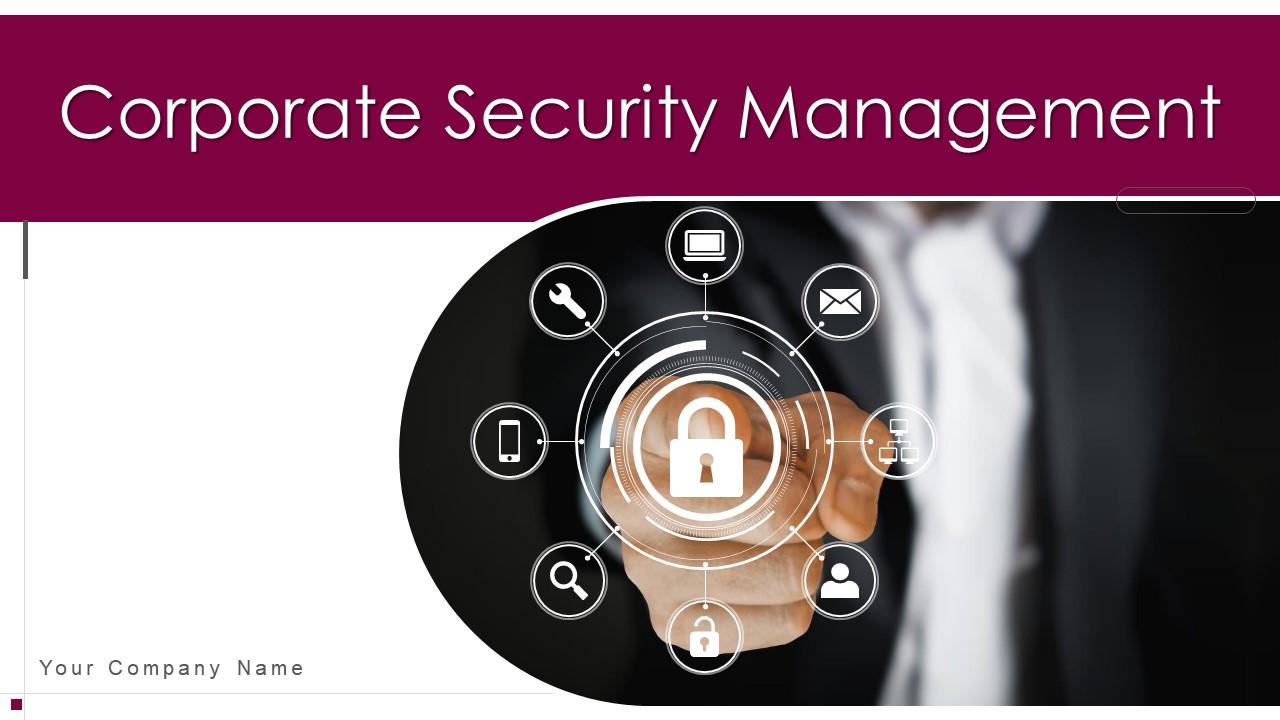From Cybersecurity to Physical Procedures: Enhancing Business Safety And Security in a Transforming Globe
In today's quickly advancing electronic landscape, the significance of business safety and security can not be overemphasized. As cyber risks become common and significantly sophisticated, companies need to go beyond conventional cybersecurity measures to secure their procedures and properties - corporate security. This is where the integration of physical safety measures comes to be critical. By integrating the toughness of both cybersecurity and physical security, companies can develop an extensive protection strategy that deals with the diverse variety of hazards they face. In this discussion, we will certainly check out the transforming risk landscape, the requirement to incorporate cybersecurity and physical safety and security, the implementation of multi-factor authentication actions, the significance of worker understanding and training, and the adjustment of security steps for remote workforces. By taking a look at these key areas, we will get valuable insights into exactly how organizations can enhance their company security in an ever-changing world.
Understanding the Changing Hazard Landscape
The evolving nature of the modern globe necessitates a comprehensive understanding of the changing threat landscape for effective corporate safety and security. It is crucial for companies to remain informed and adjust their protection measures to attend to these developing hazards.
One trick facet of understanding the changing hazard landscape is identifying the various sorts of dangers that organizations face. Cybercriminals are continuously developing new techniques to exploit vulnerabilities in computer systems and networks. These hazards can vary from malware and ransomware assaults to phishing frauds and social design tactics. In addition, physical hazards such as burglary, criminal damage, and business reconnaissance remain common worries for services.
Monitoring and examining the threat landscape is vital in order to recognize prospective dangers and vulnerabilities. This includes staying updated on the most recent cybersecurity fads, assessing threat knowledge records, and carrying out regular danger analyses. By understanding the transforming danger landscape, companies can proactively carry out proper protection steps to minimize dangers and safeguard their possessions, track record, and stakeholders.
Integrating Cybersecurity and Physical Safety And Security
Integrating cybersecurity and physical protection is vital for extensive business protection in today's digital and interconnected landscape. As companies progressively rely upon technology and interconnected systems, the limits between physical and cyber dangers are ending up being blurred. To successfully protect versus these dangers, an alternative method that incorporates both cybersecurity and physical security actions is crucial.
Cybersecurity focuses on shielding digital properties, such as data, networks, and systems, from unauthorized accessibility, disruption, and theft. Physical safety, on the other hand, includes actions to secure physical assets, individuals, and centers from dangers and vulnerabilities. By integrating these two domain names, organizations can attend to susceptabilities and hazards from both digital and physical angles, thus improving their total protection posture.
The combination of these 2 techniques allows for a much more extensive understanding of protection threats and makes it possible for a unified reaction to occurrences. For instance, physical access controls can be enhanced by incorporating them with cybersecurity methods, such as two-factor verification or biometric recognition. Cybersecurity actions can be complemented by physical safety and security steps, such as security electronic cameras, alarm systems, and safe and secure accessibility factors.

Executing Multi-Factor Verification Actions
As organizations significantly prioritize detailed safety and security steps, one reliable strategy is the execution of multi-factor authentication procedures. Multi-factor verification (MFA) is a safety approach that needs individuals to provide numerous kinds of recognition to access a system or application. This strategy adds an additional layer of defense by incorporating something the customer recognizes, such as a password, with something they have, like a fingerprint or a safety and security token.
By carrying out MFA, companies can dramatically boost their protection position - corporate security. Conventional password-based authentication has its constraints, as passwords can be conveniently jeopardized or neglected. MFA alleviates these dangers by adding an added authentication element, making it harder for unapproved individuals to get to delicate details
There are several kinds of multi-factor verification methods offered, including biometric verification, SMS-based confirmation codes, and equipment symbols. Organizations require to examine their specific demands and select the most proper MFA service for their needs.
However, the implementation of MFA need to be thoroughly planned and carried out. It is vital to strike an equilibrium between safety and use to protect against user frustration and resistance. Organizations should likewise consider prospective compatibility concerns and give appropriate training and assistance to make certain a smooth change.
Enhancing Staff Member Awareness and Training
To strengthen corporate security, companies should focus on boosting employee recognition and training. In today's rapidly progressing hazard landscape, workers play a vital role in securing an organization's delicate information and assets. However, several security breaches take place because of human error or lack of recognition. Organizations need to invest in thorough training programs to educate their workers regarding prospective dangers and the finest practices for mitigating them.
Effective employee understanding and training programs must cover a large range of topics, including data security, phishing strikes, social engineering, password hygiene, and physical safety and security actions. These programs ought to be customized to the details needs and this website responsibilities of various worker roles within the organization. Routine training workshops, sessions, and simulations can aid staff members create the necessary abilities and knowledge to react and recognize to safety and security dangers successfully.
Furthermore, organizations should urge a society of safety and security awareness and give recurring updates and pointers to keep staff members informed about the current dangers and mitigation strategies. This can be done with interior communication networks, such as newsletters, intranet sites, and email campaigns. By cultivating a security-conscious workforce, companies can dramatically minimize the possibility of security occurrences and protect their beneficial properties from unapproved gain access to or concession.

Adapting Safety And Security Procedures for Remote Labor Force
Adapting company safety and security procedures to suit a remote labor force is crucial in guaranteeing the security of delicate details and properties (corporate security). With the raising pattern of remote job, organizations must implement suitable protection measures to reduce the threats connected with this new method of functioning
One important facet of adjusting security measures for remote work is establishing protected interaction channels. Encrypted messaging platforms and virtual private networks (VPNs) can assist protect sensitive information and prevent unauthorized gain access to. Furthermore, organizations ought to impose the use of strong passwords and multi-factor authentication to enhance the safety and security of remote access.
Another important factor to consider is the application of secure remote accessibility remedies. This includes offering workers with safe access to corporate resources and data via online desktop framework (VDI), remote desktop computer protocols (RDP), or cloud-based options. These innovations make sure that delicate info continues to be secured while enabling staff members to execute their roles effectively.

Lastly, extensive protection awareness training is crucial for remote employees. Training sessions must cover ideal techniques for safely accessing and dealing with delicate information, determining and reporting phishing efforts, and preserving the overall cybersecurity hygiene.
Conclusion
Finally, as the danger landscape proceeds to advance, it is essential for organizations to enhance their security gauges both in the cyber and physical domains. Incorporating cybersecurity and physical safety and security, applying multi-factor authentication steps, site here and boosting staff member understanding and training are important actions towards attaining durable company safety. In addition, adapting protection measures to fit remote workforces is critical in today's altering globe. By executing these steps, organizations can mitigate threats and secure their beneficial properties from potential hazards.
In this conversation, we will certainly explore the transforming risk landscape, the need to incorporate cybersecurity and physical safety and security, the implementation of multi-factor verification measures, the relevance of worker understanding and training, and the adaptation official statement of protection steps for remote labor forces. Cybersecurity steps can be matched by physical safety steps, such as security video cameras, alarm systems, and safe gain access to points.
As companies progressively focus on comprehensive security procedures, one effective method is the execution of multi-factor verification steps.In conclusion, as the threat landscape continues to advance, it is critical for organizations to enhance their safety measures both in the cyber and physical domain names. Integrating cybersecurity and physical safety and security, applying multi-factor authentication steps, and enhancing staff member understanding and training are crucial steps in the direction of achieving robust company safety and security.
Comments on “Corporate Security Introduced: Shielding Your Properties and Reputation”